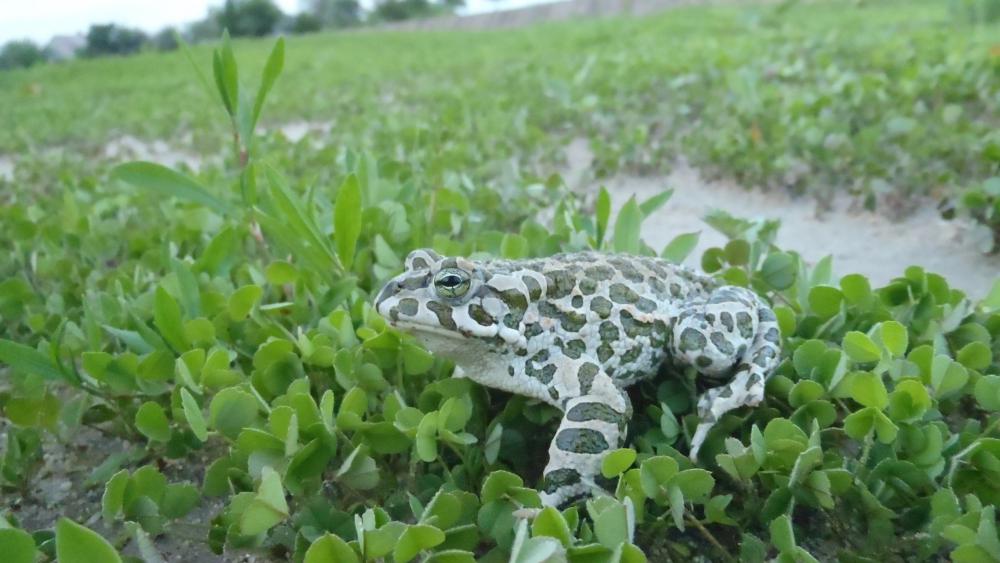
Tadpoles and adults of the European green toad (Bufo viridis) may be exposed to hormonally active substances, like EE2, in their natural habitats. | Photo: Amaël Borzée
17α-Ethinylestradiol (EE2) is a synthetic estrogen, which is a frequently used active ingredient of female contraceptive pills but naturally does not occur in the environment. As it is only incompletely removed in sewage treatment plants, it can reach water bodies in biologically relevant concentrations. The evolutionary biologist, Dr. Matthias Stöck, principal investigator of the study and Heisenberg-Fellow, says: “Amphibians are almost permanently exposed to such threats. Only, if we will be able to actually access these risks, we will be able to eliminate them in the long term”.

Tadpoles and adults of the European tree frog (Hyla arborea) may also be exposed to hormonally active substances in their natural habitats. | Photo: Christophe Dufresnes
The sensitivity towards hormonally active substances, like EE2, is not the same in all amphibians, hypothesize the scientists. Some species have passed through several hundred million years of independent evolutionary history and have evolved different mechanisms of genetic sex determination. Thus, for the first time within the same experiment, the research team from the IGB and the University of Wroclaw tested the influence of EE2 on the development of three different amphibian species: In addition to the model species, the African clawed frog (Xenopus laevis), tadpoles of the European tree frog (Hyla arborea) and the European green toad (Bufo viridis) have been raised in water containing different concentrations of EE2, and compared to control groups.
Remarkable in this experiment was that the genetic sex of all species was established using latest molecular approaches. At the same time, the researchers studied the phenotypic development of the sexual organs (gonads), i.e. the anatomical appearance and that of the tissues under the microscope. Only this comparison of genetic and phenotypic sex has allowed to completely capture the effects of EE2.
“In addition to other threats, the feminization of populations may contribute to the extinction of amphibian species”, says Matthias Stöck.
The results of the study show that after exposition to EE2, in all amphibian species, a sex reversal occurred reaching from 15 to 100 percent. However, the three species exhibit different sensitivity. IGB-researcher Prof. Werner Kloas, co-author of the paper, is an internationally renowned eco-toxicologist. He says: “EE2 is also part of our water supply and, together with other estrogen-like substances, it presents a serious risk not only for amphibians but also for humans. Our study shows that the clawed frog as model species is well-suited to study the effects of hormonally active substances in the environment. The effect established in this species, however, cannot be extrapolated to other amphibian species without caution.”
For the study, the collaboration with the University of Wroclaw in Poland was essential. The collaborator there, Prof. Maria Ogielska, declares: „We have contributed our profound research experience from the investigation of reproduction of amphibians, namely from developmental biology, into the project”. Ph.D.-student Stephanie Tamschick says: „Together with students, we have raised tadpoles over three months, under identical experimental conditions. It was new that we have established the genetic sex in all species, i.e. whether a tadpole was genetically male or female. In my thesis, especially by this approach, I could conclude that the feminizing effects of EE2 are so diverse among the examined frog and toad species.”
This study has been supported by grants from the German Science Foundation (DFG) to Matthias Stöck. The Open Access publication was supported by the Open Access Fund of the Leibniz-Association.





